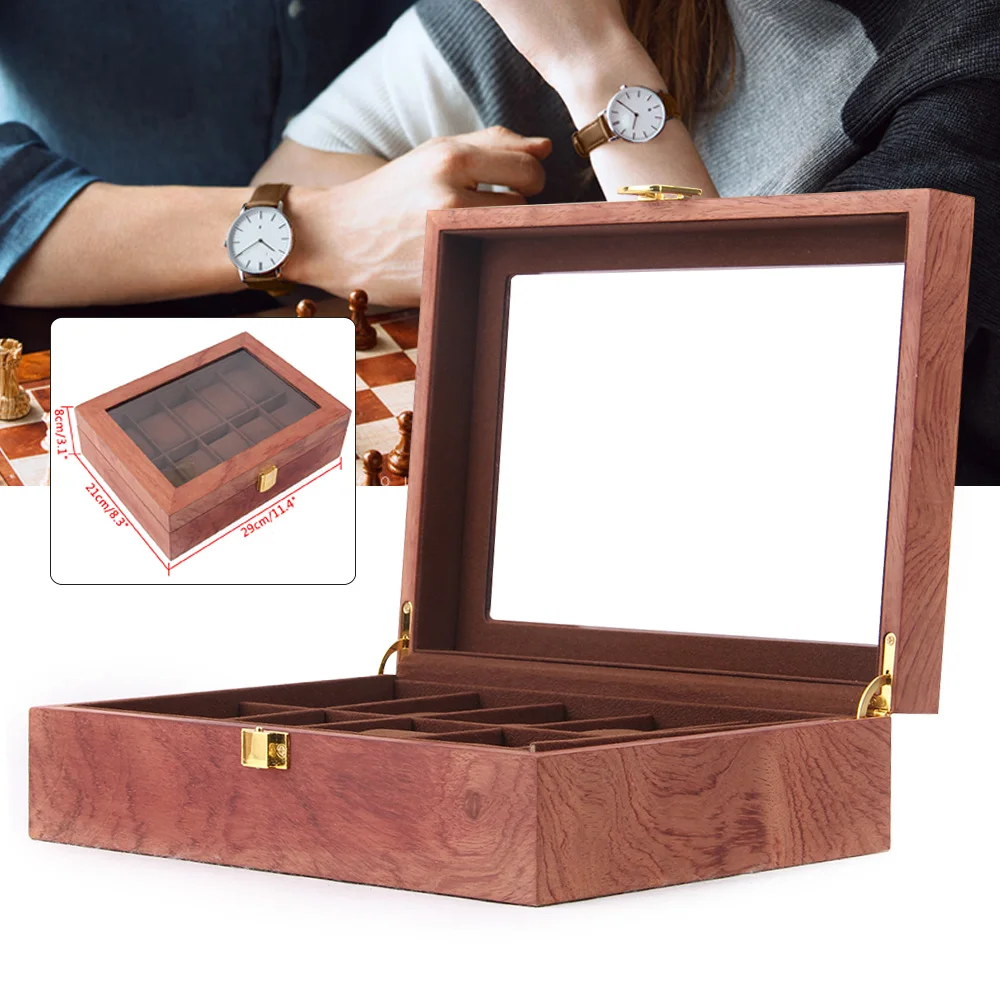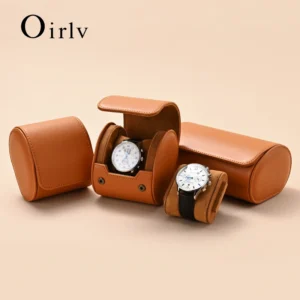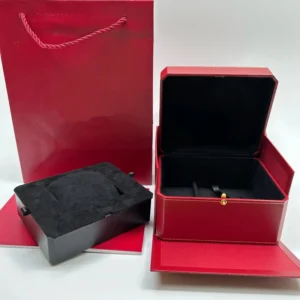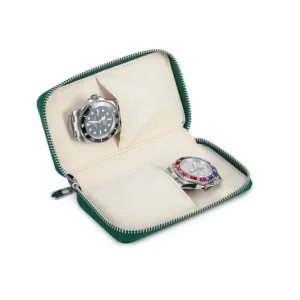Introduction to Leather Watch Case Care
Leather watch cases represent not just a practical way to store timepieces, but often an investment in their own right. Regular cleaning and maintenance of these leather accessories is essential for preserving their beauty, maintaining their structural integrity, and ensuring they remain hygienic over time. Proper care can significantly extend the lifespan of your leather watch case, potentially adding years of use to an item that may have cost $100 or more.
Without appropriate maintenance, leather watch cases commonly develop several issues:
- Cracking and drying out, particularly along seams and edges
- Discoloration from handling, dust accumulation, or sun exposure
- Unpleasant odors from moisture or bacterial growth
- Loss of suppleness and natural luster
Premium watch collectors understand that caring for leather watch cases is just as important as maintaining the timepieces they contain. This comprehensive guide will walk you through everything you need to know about properly cleaning and preserving your leather watch cases, from identifying your leather type to addressing common stains and establishing a maintenance routine.
Understanding Different Types of Leather Watch Cases
Before cleaning any leather watch case, it’s crucial to identify what type of leather you’re working with, as each requires slightly different care approaches:
Full-grain leather: The highest quality leather that includes the entire grain surface with all natural markings. It develops a beautiful patina over time but requires regular conditioning to maintain its suppleness.
Top-grain leather: Slightly processed to remove imperfections, this leather is thinner than full-grain but still durable. It has a more uniform appearance and typically requires less frequent conditioning.
Genuine leather: A lower grade that uses the layers remaining after top-grain is removed. While less expensive, it still benefits from proper care to extend its lifespan.
Suede and nubuck: These leathers have a soft, fuzzy texture created by buffing the surface. They’re highly susceptible to staining and require specialized cleaning methods.
Exotic leathers: Made from animals like alligator, ostrich, or snake, these distinctive leathers feature unique patterns and textures that need specialized care.
If you’re uncertain about your leather type, examine the texture, thickness, and any visible grain patterns. High-quality watch cases often include care instructions that specify the leather type. Understanding how leather aging affects watch boxes can also help you identify your particular leather and its specific needs.
Essential Tools and Materials for Leather Care
Gathering the right supplies before starting ensures you can clean your leather watch case effectively without causing damage:
- Microfiber cloths: Soft, lint-free cloths that won’t scratch or leave fibers behind on your leather
- Soft-bristled brushes: Used for gentle removal of dust and debris (horsehair brushes are ideal for leather)
- Leather-specific cleaners: pH-balanced formulas designed specifically for leather care
- Distilled water: Unlike tap water, it contains no minerals that could potentially stain leather
- Leather conditioners: Replenish natural oils and maintain leather’s suppleness
- Cotton swabs: Perfect for reaching corners and detailed areas
- Suede brush/eraser: Special tools designed for the unique needs of suede and nubuck
- Leather protectant: Creates a barrier against future stains and moisture
Avoid using household cleaners like dish soap, which can strip natural oils from leather. Similarly, avoid paper towels that might scratch the surface or leave behind lint. Selecting the right cleaning products for leather watch boxes makes a significant difference in both cleaning effectiveness and leather longevity.
Preparing for the Cleaning Process
Proper preparation ensures the best results and minimizes risk of damage:
Remove watches from the case if possible. This provides better access to all surfaces and prevents accidental damage to your timepieces.
Check for any manufacturer’s care instructions that might have come with your watch case. These often contain valuable information specific to your case’s leather type.
Test any cleaning product on an inconspicuous area first, like the bottom or inside corner. Apply a small amount and wait 24 hours to ensure there’s no discoloration or adverse reaction.
Set up a clean, well-lit workspace with a soft, clean surface. Good lighting helps you spot dirt and stains, while a clean surface prevents additional contamination.
Examine the leather carefully for existing damage, wear patterns, or heavily soiled areas that might need special attention.
Always work in a well-ventilated area, as some leather cleaning products can have strong fumes. Keep your workspace away from direct sunlight, which can cause leather to dry out too quickly during the cleaning process.
General Cleaning Method for Smooth Leather Watch Cases
For most common leather types like full-grain, top-grain and genuine leather, follow this step-by-step process:
Remove surface dust: Using a soft brush or dry microfiber cloth, gently brush the entire surface to remove loose dirt and dust. Work in one direction rather than circular motions for more effective dust removal.
Prepare your cleaning solution: Following product instructions, prepare your leather cleaner. If using a concentrate, mix with distilled water at the recommended ratio.
Dampen your cloth: The cloth should be slightly damp, not wet. Excess moisture is leather’s enemy and can cause water spots or deeper damage.
Clean with gentle motions: Work in small sections using light, circular motions. Apply minimal pressure to avoid pushing dirt deeper into the leather.
Address edges and seams: Use a slightly damper cloth or cotton swab for seams and edges where dirt often accumulates. Be particularly gentle around stitching.
Remove cleaner residue: Wipe the surface with a clean, slightly damp cloth to remove any cleaning solution residue.
Allow initial air drying: Let the leather dry naturally at room temperature for approximately 20-30 minutes before proceeding to conditioning.
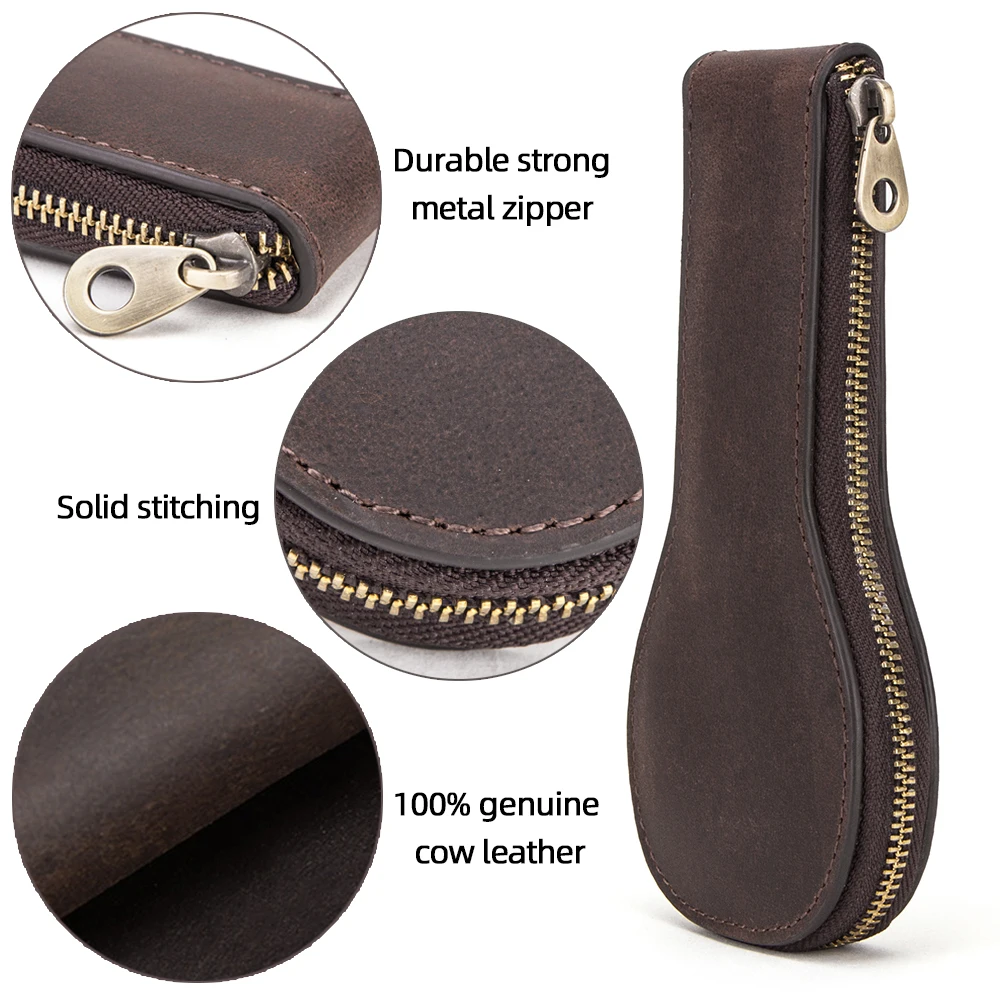
Throughout the cleaning process, check your cloth frequently. If you notice color transfer to the cloth, you may be using too much pressure or your cleaner might be too strong. The entire cleaning process typically takes 15-20 minutes, not including drying time.
Our collection of leather watch boxes features various leather types, each benefiting from these careful cleaning techniques.
Specialized Cleaning for Suede and Nubuck Watch Cases
Suede and nubuck require completely different cleaning approaches than smooth leathers. Their raised fibers (called nap) make them particularly susceptible to damage from liquids and improper handling:
For regular maintenance cleaning:
1. Use a suede brush to gently remove surface dust and dirt. Always brush in one direction to avoid damaging the nap.
2. For stubborn dirt, use a specialized suede eraser with light pressure to lift the soil from the fibers.
3. Follow with gentle brushing to restore the nap and texture.
For spot cleaning:
1. Address stains immediately when possible, as they set quickly in these absorbent materials.
2. For dry stains, start with a suede eraser, working from the outside of the stain toward the center.
3. For oil-based stains, apply a small amount of cornstarch or talcum powder to absorb the oil, let sit for several hours, then brush away.
⚠️ Warning: Never use regular leather cleaners or water on suede or nubuck. Even small amounts of liquid can leave permanent water spots and damage the texture.
To restore flattened areas, lightly steam the affected section (holding a steamer several inches away) and immediately brush to lift the fibers. Learning proper leather watch box maintenance tips can help preserve the unique texture and appearance of suede and nubuck materials.
Cleaning Exotic Leather Watch Cases
Exotic leather watch cases made from alligator, crocodile, ostrich, or snake skins require special attention due to their unique patterns and textures:
• Alligator and crocodile leather: Clean with minimal moisture using products specifically formulated for reptile skin. Follow the scales’ natural direction when cleaning to avoid lifting edges.
• Ostrich leather: The distinctive quill pattern requires gentle cleaning with a slightly damp cloth. Pay special attention to the raised nodules, where dirt can accumulate around the base.
• Snakeskin: Extremely delicate and susceptible to scale lifting. Use specialized reptile leather cleaner with minimal moisture applied with an extra-soft cloth.
• Stingray: This highly durable exotic leather has a textured surface that requires a slightly firmer brush to clean between the raised patterns.
For all exotic leathers, use significantly less pressure than you would with conventional leathers. Their unique patterns and textures can be damaged by overzealous cleaning. Consider professional cleaning for valuable or heavily soiled exotic leather cases.
Our luxury watch boxes collection includes pieces made with fine exotic leathers that showcase these distinctive materials’ natural beauty when properly maintained.
Drying and Conditioning Leather After Cleaning
Proper drying and conditioning are critical steps that many people overlook, yet they significantly impact your leather’s longevity:
Drying Process:
1. Allow the leather to air dry naturally at room temperature (65-75°F).
2. Keep away from direct heat sources like radiators, hair dryers, or sunlight, which can cause cracking and warping.
3. Expect different drying times based on leather type: smooth leathers typically dry in 2-4 hours, while suede and nubuck may require 4-6 hours.
4. If the watch case has flexible elements, stuff them lightly with acid-free tissue to maintain shape during drying.
Conditioning Process:
1. Choose a conditioner appropriate for your specific leather type. Avoid silicone-based products, which can cause buildup over time.
2. Apply a small amount of conditioner to a soft cloth (never directly to the leather).
3. Work in small sections using gentle circular motions, allowing the leather to absorb the conditioner.
4. Let the conditioner penetrate for the time specified on the product (typically 15-30 minutes).
5. Buff gently with a clean, dry cloth to remove excess and create a subtle luster.
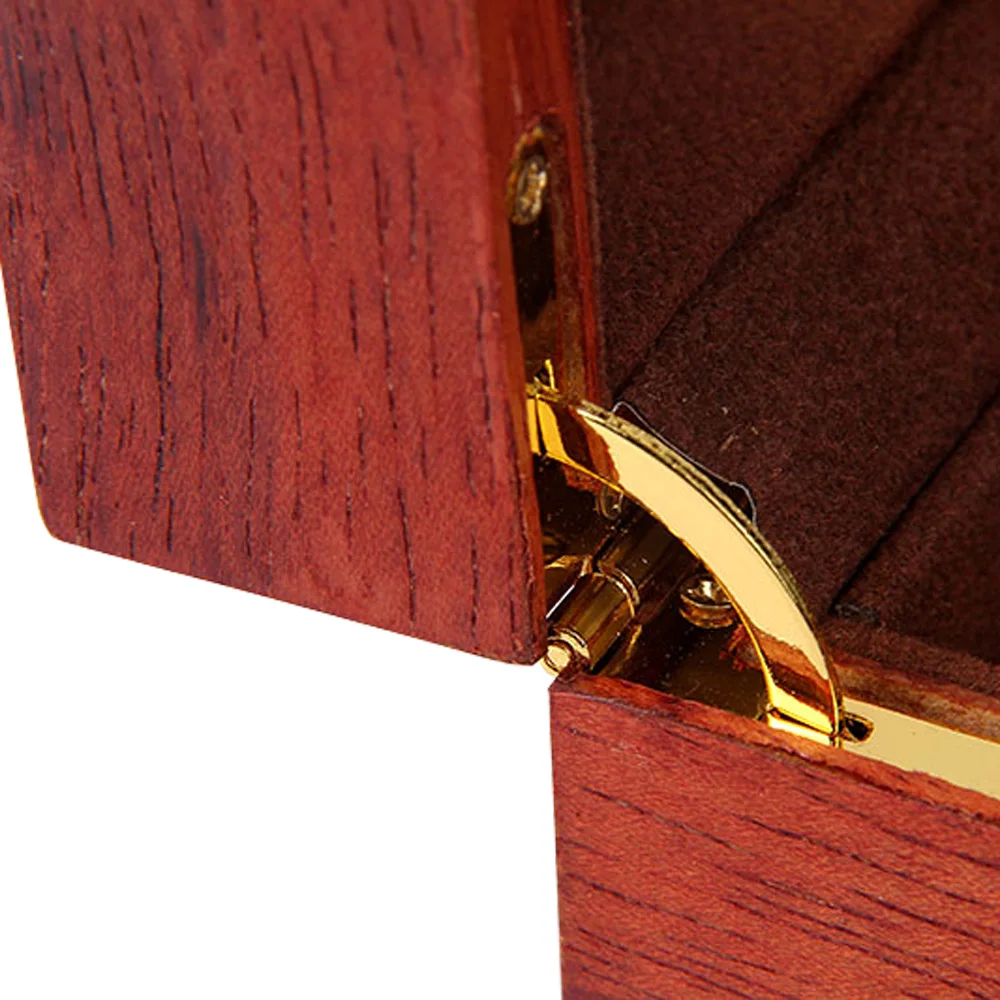
Under-conditioned leather appears dry and may develop a whitish haze, while over-conditioned leather looks greasy and may attract more dirt. Finding the right balance is key, and understanding whether you should oil leather watch accessories depends on your specific leather type and usage patterns.
Addressing Common Stains and Issues
Different stains require different treatment approaches:
Water Stains
– Gently blot (don’t rub) fresh water spots immediately with a dry cloth
– For dried water stains, lightly dampen the entire section to even out the moisture, then allow to dry naturally
– Follow with conditioning to restore uniform appearance
Oil and Grease
– Blot excess oil immediately without pressing it deeper into leather
– Apply cornstarch or talcum powder to absorb remaining oil
– Let sit for 4-6 hours or overnight, then brush away powder
– Repeat if necessary before cleaning normally
Ink Stains
– Act quickly as ink sets rapidly in leather
– Blot (don’t rub) with a dry cloth
– For small stains, try a cotton swab with a tiny amount of rubbing alcohol on an inconspicuous area first
– For larger or set-in stains, seek professional help
Mold and Mildew
– Take outside to avoid spreading spores
– Wipe with a cloth dampened with a solution of equal parts white vinegar and water
– Let dry completely in a well-ventilated area
– Apply leather conditioner after fully dry
Scratches and Scuffs
– For minor scratches, gently rub with your finger to warm the leather and redistribute natural oils
– Apply conditioner to the area and buff gently
– For deeper scratches, consider a leather repair kit matched to your color
Using proper watch travel cases can help prevent many of these common stains and damage issues in the first place, especially when traveling or storing watches for extended periods.
Protecting and Maintaining Leather Watch Cases
Establishing a regular maintenance routine extends your leather case’s life significantly:
Preventative Care Routine:
– Dust weekly with a soft, dry cloth or brush
– Keep away from direct sunlight, which causes fading and drying
– Store in a climate-controlled environment (humidity between 40-60% and temperature between 65-75°F)
– Handle with clean hands to prevent oil and dirt transfer
– Avoid contact with perfumes, colognes, and lotions
Leather Protectant Application:
– Apply an appropriate leather protectant after cleaning and conditioning
– Use spray protectants for suede/nubuck and cream formulations for smooth leathers
– Reapply protectant every 3-6 months or after thorough cleaning
– Test protectants on an inconspicuous area first
Maintenance Schedule:
– Light dusting and surface cleaning: weekly
– Deeper cleaning: every 3-6 months depending on use
– Conditioning: every 4-6 months for regularly used cases
– Full cleaning and protection routine: biannually
Understanding how to properly protect leather watch cases from moisture is particularly important, as water damage is among the most common and destructive problems for leather goods.
Do’s and Don’ts for Leather Watch Case Care
Following these essential guidelines will help you avoid common mistakes:
Do:
– Test all products on an inconspicuous area first
– Use leather-specific cleaners and conditioners
– Allow complete drying between each step of the cleaning process
– Store in breathable containers or bags
– Clean spills and stains immediately
– Use minimal moisture when cleaning
Don’t:
– Use household cleaners like dish soap, vinegar, or alcohol
– Apply direct heat to speed drying (no hair dryers, radiators, etc.)
– Over-saturate with conditioner or cleaner
– Use colored cloths that might transfer dye to the leather
– Store in plastic bags or airtight containers, which can trap moisture
– Place heavy objects on leather cases, which can cause deformation
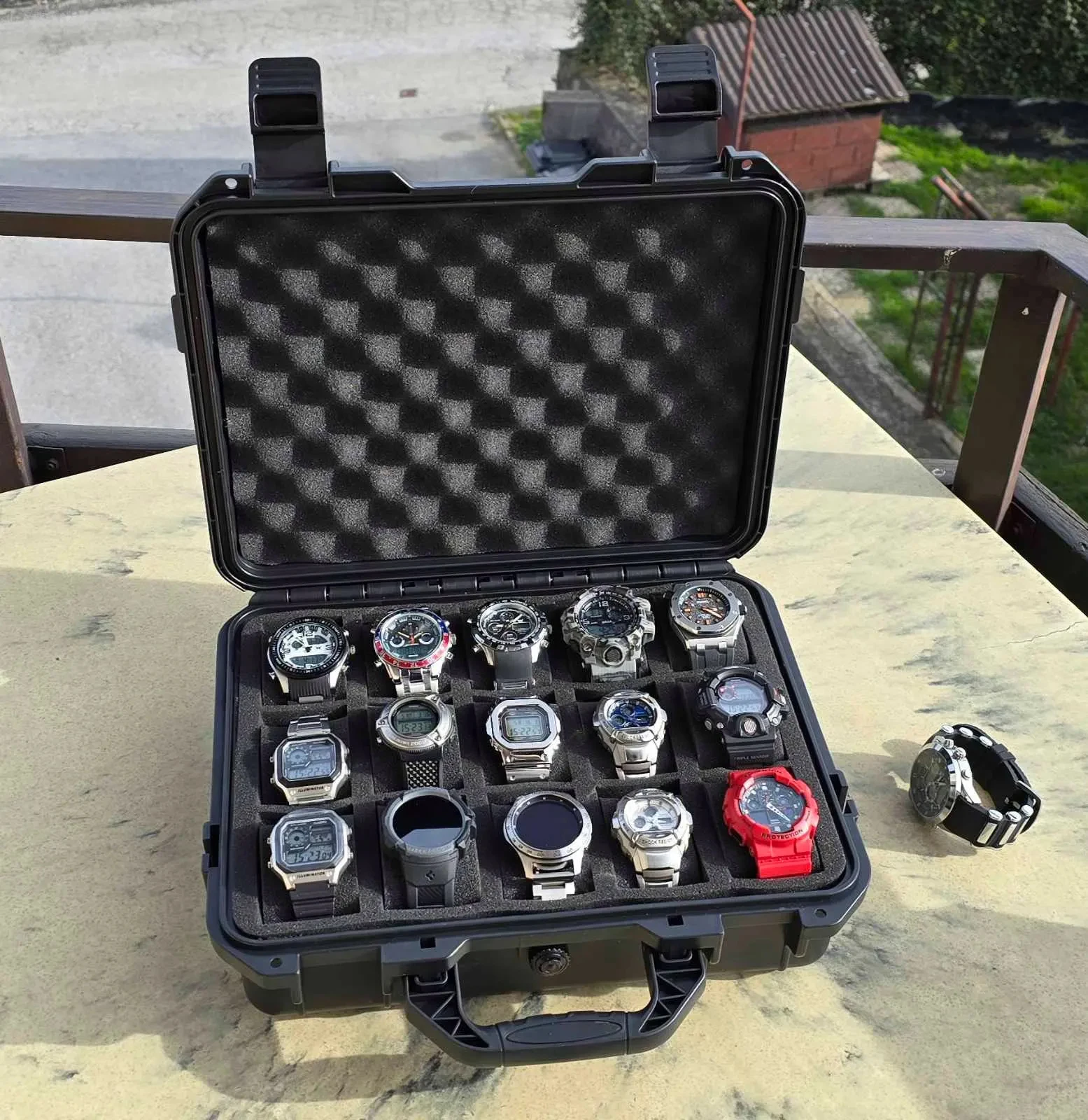
For the best protection of your timepieces, explore our collection of watch and jewelry boxes designed with proper storage conditions in mind.
Frequently Asked Questions About Leather Watch Case Care
How often should I clean my leather watch case?
Lightly dust weekly and perform deeper cleaning every 3-6 months, depending on use and exposure to dirt and oils.
Can I use household products like vinegar or olive oil?
No, these can damage leather. Vinegar is too acidic, and food oils can turn rancid. Always use products specifically formulated for leather care.
How do I know if my leather needs conditioning?
If it feels dry, looks dull, or makes a slight crackling sound when flexed, it likely needs conditioning. Another indicator is if water droplets are immediately absorbed rather than beading slightly.
What should I do if my leather watch case gets wet?
Blot (don’t rub) with a dry, absorbent cloth immediately. Allow to dry naturally away from heat sources, then condition once completely dry.
Can I restore dried-out or cracked leather?
Minor dryness can be restored with proper conditioning, but once leather has cracked significantly, complete restoration is difficult. Early and regular conditioning prevents this issue.
Is it normal for leather to darken over time?
Yes, most leathers naturally darken with age and exposure to light, oils, and air. This patina is often desirable and considered a mark of quality leather.
When should I seek professional cleaning?
Consider professional services for valuable exotic leathers, severe staining, or significant structural issues that DIY methods can’t address.
When choosing between wood and leather storage options, understanding how to choose wood or leather watch cases can help you select the best option for your collection’s needs.
Luxury Watch Boxes, Men's Watch Boxes, Single Watch Box
Price range: $903.35 through $980.97 Select options This product has multiple variants. The options may be chosen on the product pageSingle Watch Travel Case, Watch and Jewelry Box, Watch Roll Travel Case
Price range: $93.44 through $140.65 Select options This product has multiple variants. The options may be chosen on the product pageLuxury Watch Boxes, Luxury Watch Travel Case
Price range: $200.33 through $224.57 Select options This product has multiple variants. The options may be chosen on the product pageLeather Watch Travel Case, Men's Watch Travel Case, Watch Roll Travel Case
Price range: $91.37 through $92.63 Select options This product has multiple variants. The options may be chosen on the product pageWatch and Jewelry Box, Watch Drawer Organizer
Price range: $181.91 through $233.38 Select options This product has multiple variants. The options may be chosen on the product pageWatch Organizer, Watch Roll Travel Case
Price range: $88.39 through $99.36 Select options This product has multiple variants. The options may be chosen on the product page
When to Seek Professional Leather Care
While most leather cleaning can be handled at home, certain situations warrant professional attention:
• Severe staining that resists gentle cleaning methods, particularly ink or oil that has fully penetrated the leather
• Structural damage including torn seams, separated layers, or warped forms that affect functionality
• Color restoration when leather has faded significantly or developed uneven coloration
• Valuable or rare leathers, particularly antique cases or those made from exotic materials
Professional leather specialists have access to commercial-grade cleaners, specialized tools, and techniques not available to consumers. When seeking professional help, look for specialists with specific experience in fine leather goods rather than general leather repair shops.
The decision between repair and replacement is sometimes difficult, but understanding leather watch case repair versus replacement factors can help you make an informed choice based on value, sentiment, and condition.
Related Leather Care Considerations for Watch Collectors
For watch enthusiasts looking to maintain a complete collection, several related care considerations deserve attention:
• Coordinated care for watch bands and cases: Many of the same principles apply to leather watch bands, though they face more frequent contact with skin oils and moisture.
• Integrated storage solutions: Consider display options that minimize dust accumulation while allowing leather to breathe properly.
• Vintage leather care: Older leather items often require more gentle cleaning methods and more frequent conditioning to prevent brittleness.
• Balancing display with preservation: Rotate displayed pieces periodically to ensure even exposure to environmental conditions.
Learning more about preserving leather watch storage can help you maintain your entire collection. Different materials require different approaches, so understanding the maintenance requirements for wood versus leather cases helps create an effective care routine for your entire collection.
With proper care and maintenance, a quality leather watch case can last for decades, protecting your timepiece investment while maintaining its own beauty and functionality as part of your collection.

